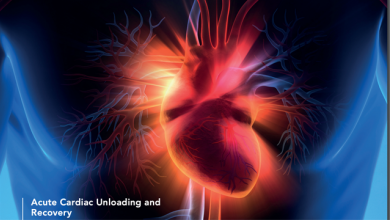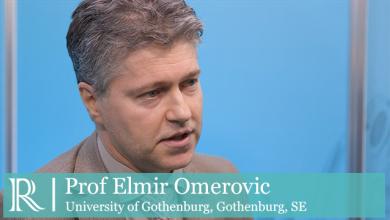Search results
Author(s):
Antonio Abbate
,
Cory Trankle
,
Leo Buckley
,
et al
Added:
4 years ago
Author(s):
Zach George
Added:
3 years ago
Author(s):
Perwaiz M Meraj
Added:
6 years ago
Author(s):
Petr Kala
Added:
3 years ago
Patients suffering acute myocardial infarction with ST-segment elevation (STEMI) require full attention of the whole STEMI network to save their lives and to improve the quality of life after a heart attack. Close cooperation among all stakeholders on a national and regional level has to be established. The emergency medical service (EMS) and direct transportation to the 24 hours a day, seven…
View more
Author(s):
Matthias Hasun
,
Franz Weidinger
Added:
3 years ago
For ST-segment elevation myocardial infarction (STEMI), there is currently no doubt that primary percutaneous coronary intervention (PPCI) of the infarct related artery (IRA) is the preferred reperfusion strategy.1 In about 50% of cases, STEMI is associated with multivessel coronary artery disease (MVCAD), defined as a ≥50% stenosis in at least one non-infarct related epicardial coronary artery …
View more
Author(s):
Deepak Natarajan
Added:
3 years ago
Primary percutaneous coronary intervention (PCI) is the treatment of choice in the management of acute ST-segment elevation myocardial infarction (STEMI). It has been constantly observed that, despite restoring good epicardial flow with PCI, myocardial perfusion at the cellular level remains impaired in nearly 50 % of STEMI patients. This led to the development of a new class of antiplatelet…
View more
Author(s):
Elmir Omerovic
Added:
5 years ago
Prof Elmir Omerovic (University of Gothenburg, Gothenburg, SE) discusses updatesfrom SCAAR registry- Pretreatment with P2Y12 Receptor Antagonists is not Associated with Improved Clinical Outcomes in UA/NSTEMI.
Filmed on-site at ESC2018, Munich.
View more
Author(s):
Fizzah A Choudry
,
Roshan P Weerackody
,
Daniel A Jones
,
et al
Added:
3 years ago
Over the last few decades, primary percutaneous coronary intervention (PCI) has revolutionised the treatment of ST-elevation myocardial infarction (STEMI) with rapid recanalisation of the infarct-related epicardial vessel, resulting in smaller infarct size and a substantial reduction in adverse clinical endpoints.1,2 However, suboptimal myocardial reperfusion is documented to occur in a…
View more
Eduardo Bosch-Peligero
Author
Author(s):
Adeogo Akinwale Olusan
,
Peadar Devlin
Added:
2 years ago














